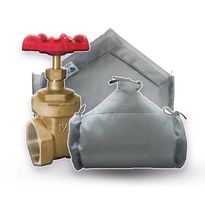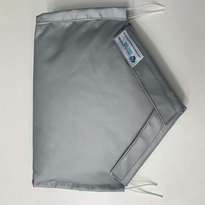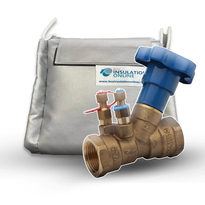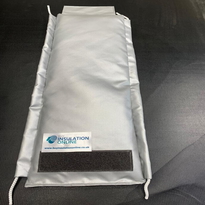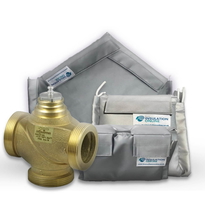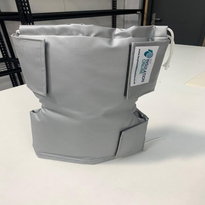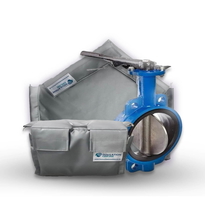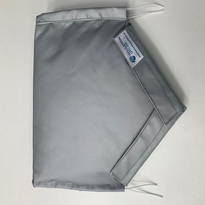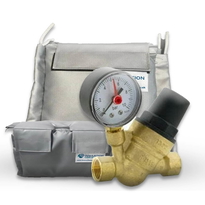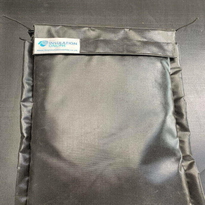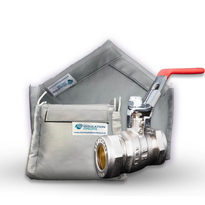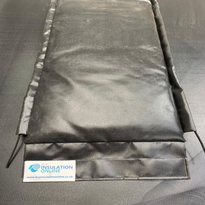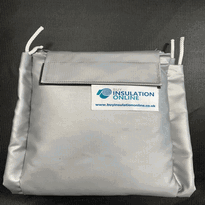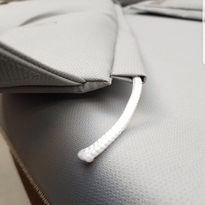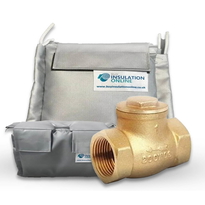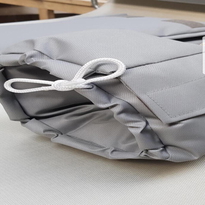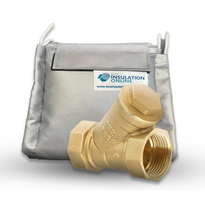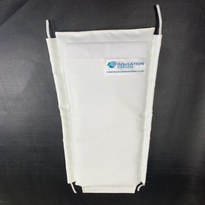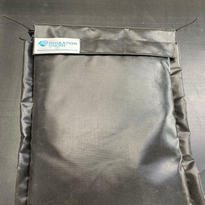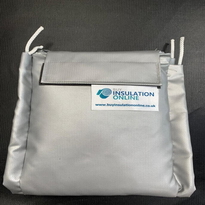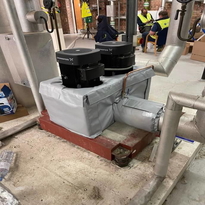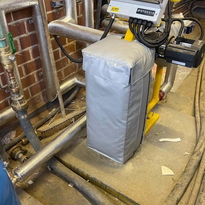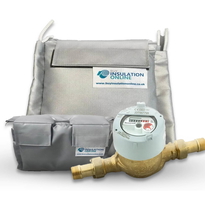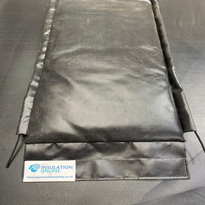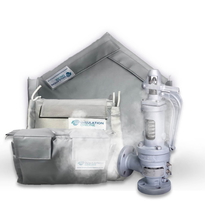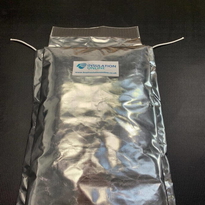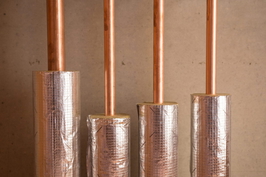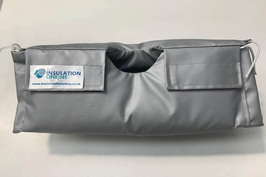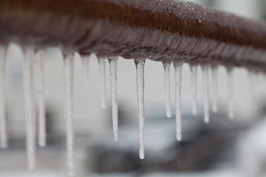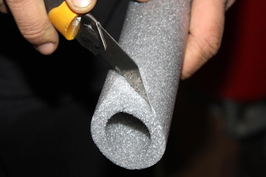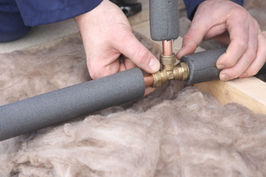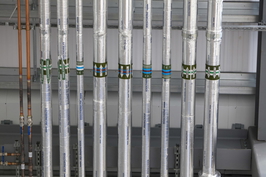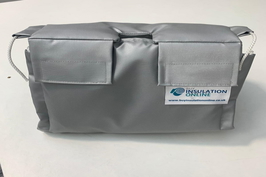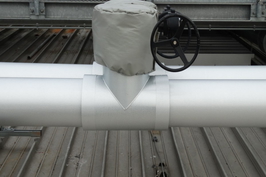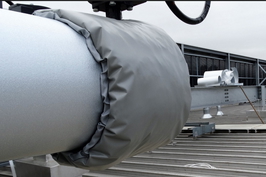Removable Pipe Insulation Jackets
Removable pipe insulation jackets are specially designed coverings crafted from durable, high-performance materials such as fibreglass, ceramic, or composite fabrics. These jackets facilitate easy installation, removal, and maintenance of pipe insulation in various industrial environments. They are equipped with secure fastening systems, including straps or Velcro, allowing for quick access for inspections or repairs while ensuring continuous thermal protection.
Widely utilised across sectors such as power generation, heating, ventilation, and air conditioning (HVAC), maritime, and manufacturing industries, these jackets enhance both energy efficiency and safety. Their specialised construction supports the demanding conditions of industrial applications, providing reliable insulation and easy access for routine checks or maintenance.
Ongoing developments in material technology and construction features continue to improve their functionality, making removable pipe insulation jackets an essential component in modern industrial maintenance strategies. Their ability to combine robust insulation with straightforward handling makes them a practical solution for ensuring operational continuity and optimal thermal management.
Types of Removable Pipe Insulation Jackets
What're the different types of removable pipe insulation jackets available for various industrial and commercial applications? These jackets are constructed from a range of materials tailored to specific temperature ranges and environmental conditions. Silicone coating is commonly used in low-temperature settings because it offers excellent durability and resistance to environmental factors. Polyurethane coatings provide enhanced protection against moisture and chemicals, making them suitable for challenging conditions. For applications involving high temperatures, specialised high-temperature materials are designed to withstand elevated heat levels, often up to 1800°C with specialised formulations. Teflon coatings contribute chemical resistance and non-stick properties, ensuring ease of maintenance and reliability. Combination coatings are also available, combining the benefits of different materials to optimise performance across varying operational conditions. The selection of the coating depends on the specific environmental and operational requirements, ensuring optimal insulation performance. Construction of these jackets involves a textile base, sewn with industrial-grade threads to ensure robustness and longevity. They're filled with insulating materials such as glass wool, mineral wool, ceramic wool, or aerogel, each selected for their thermal performance and fire resistance capabilities. The choice of insulation depends on the specific thermal requirements and environmental exposures. Understanding the fire safety implications of different insulation materials can guide better material choices. Fastening systems are an integral part of removable pipe insulation jackets, ensuring a secure and customisable fit. Common fastening options include hooks, straps, Velcro, and metal bands. These systems facilitate easy installation and removal for maintenance, inspection, or adjustments, extending the operational lifespan of the insulation.
Key Applications and Industries
Removable pipe insulation jackets play a crucial role across a range of industries where temperature regulation, energy efficiency, and equipment protection are essential. In power generation, they insulate pipes and machinery in nuclear and thermal power stations, ensuring safe and efficient operation. Heating, ventilation, and air conditioning (HVAC) systems benefit from these jackets by maintaining desired temperatures and reducing heat loss, which ultimately lowers energy consumption. The versatility of removable jackets allows for quick inspection, maintenance, and repairs without dismantling entire sections of piping or equipment reducing downtime. These jackets are often manufactured from durable, high-quality materials that support environmental sustainability initiatives, such as supporting eco-friendly practices. In the maritime sector, particularly shipbuilding, jackets are used to insulate pipes and equipment, helping prevent thermal damage and issues related to condensation. The food and beverages industry also relies on these jackets to preserve temperature during processing and storage, thus maintaining product quality and safety standards. Automotive manufacturing is another sector that gains from the use of removable insulation jackets, where they're employed to insulate machinery and piping. This enhances process stability and facilitates routine maintenance by allowing easy access when needed. Overall, removable pipe insulation jackets contribute significantly to operational efficiency by simplifying maintenance procedures, conserving energy, and extending the lifespan of equipment. Additionally, their use supports environmental objectives through the responsible and efficient utilisation of resources.
Materials and Features of Insulation Jackets
Materials used in insulation jackets are selected based on their thermal properties, durability, and suitability for specific operational conditions. Common insulation fillings include aerogel, wool, and fibreglass, which provide effective thermal resistance by reducing heat transfer.
Fibreglass cloth, often shaped into needled webs, varies in thickness from 6 mm to 25 mm, offering customised insulation layers. Silicone-coated fibreglass cloth provides flexibility for universal-fit jackets, accommodating diverse pipe sizes. The fibreglass material's non-combustibility and stability ensure safety in high-temperature environments and compliance with fire safety standards.
Fluoropolymer-coated glass fabrics, used in PTFE-based jackets, deliver chemical resistance and long-lasting durability. Metal sheets such as aluminium, stainless steel, and coated steel serve as outer protective layers, delivering resistance to corrosion, mechanical wear, and environmental exposure. Needled Fiberglass Wool is suitable for continuous temperatures up to 1200°F, making it ideal for high-temperature applications. These carefully chosen materials ensure that insulation jackets meet demanding operational requirements while maintaining ease of installation and removal.
Benefits of Using Removable Insulation Jackets
Implementing removable insulation jackets provides numerous advantages, particularly in boosting energy efficiency and reducing operational expenses. These jackets effectively minimise heat loss, thereby decreasing the energy required to maintain desired operational temperatures. Such efficiency leads to notable financial savings; for instance, at SUNY New Paltz, a saving of USD 250,000 was realised over five years through lower heating costs.
Furthermore, these jackets help reduce cooling expenses by maintaining cooler environments and supporting overall energy conservation. Their quick and straightforward installation and removal facilitate routine maintenance and inspections, enhancing operational flexibility and reducing downtime. This ease of handling also contributes to a safer work environment, reducing the risk of accidents during maintenance activities.
Safety is another key benefit. Removable insulation jackets act as barriers against burns, conceal sharp edges, and limit fire hazards, creating a safer working environment for staff.
The table below summarises these practical benefits:
Benefit |
Explanation |
| Energy efficiency | Minimises heat loss, reduces energy consumption and costs |
| Safety enhancements | Less risk of burns, made from fire-resistant materials |
| Maintenance convenience | Easy to remove, enabling quick inspections and repairs |
| Cost savings | Cuts heating and cooling expenses, prolongs equipment lifespan |
Using removable insulation jackets is a strategic choice for organisations seeking to improve operational safety, regulatory compliance, and cost efficiency across their facilities.
Manufacturing Details and Specifications
The manufacturing process of removable pipe insulation jackets involves selecting high-quality raw materials—such as fibreglass, ceramic, and needled fibreglass—that provide the necessary thermal resistance and durability. These materials are precisely cut, often using automated tools like Autometrix, to ensure consistent dimensions. Removable jackets can be reused multiple times without degradation in insulating properties. The jackets feature a spiral winding pattern, which guarantees even coverage around pipes, and overlapping edges secured with hot melt adhesives or thermoplastic layers activated at temperatures above 60°C for a secure fit. Additional specifications include a typical thickness of 31–40 mm, high-temperature resistance up to 1500°C, and colour options primarily in grey. Manufacturing involves seamless integration of these elements to produce reliable, reusable insulation jackets suitable for demanding industrial environments. Advanced manufacturing precision ensures uniform quality and performance across each insulation jacket.
Conclusion
Removable pipe insulation jackets provide a versatile and efficient solution for thermal management across a variety of industries. Their ease of installation, maintenance, and inspection make them highly desirable for applications where regular access to piping is necessary. By understanding the different types, materials, and suitable applications, users can select the most appropriate jackets to enhance energy efficiency and protect equipment effectively.
These jackets are designed for durability and straightforward removal, facilitating ongoing assessments and repairs without the need for extensive dismantling. This practicality supports maintaining optimal system performance while reducing downtime. Furthermore, their adaptability helps extend the lifespan of piping infrastructure, safeguarding against temperature loss and environmental damage.
Choosing the right removable insulation jackets involves considering the specific operational conditions, including temperature ranges, exposure to environmental elements, and regulatory requirements. Proper selection and maintenance ensure that these jackets continue to deliver reliable thermal protection, contributing to energy conservation and operational efficiency in diverse settings across the UK.









